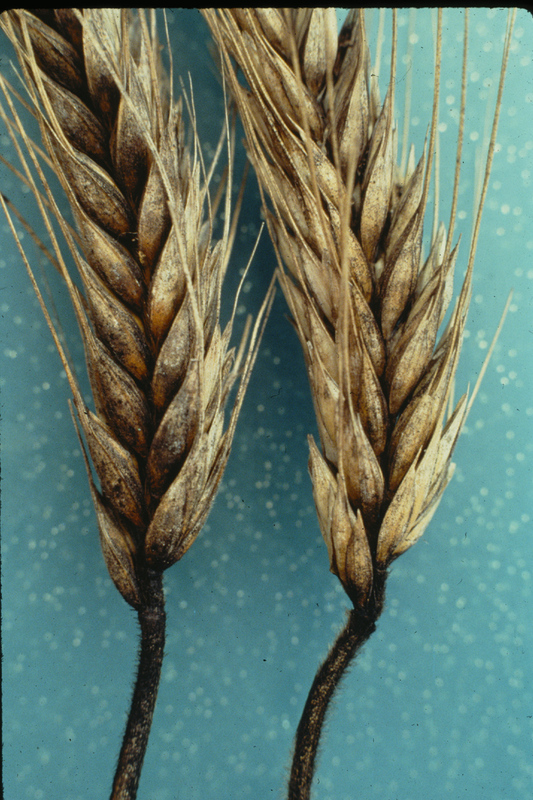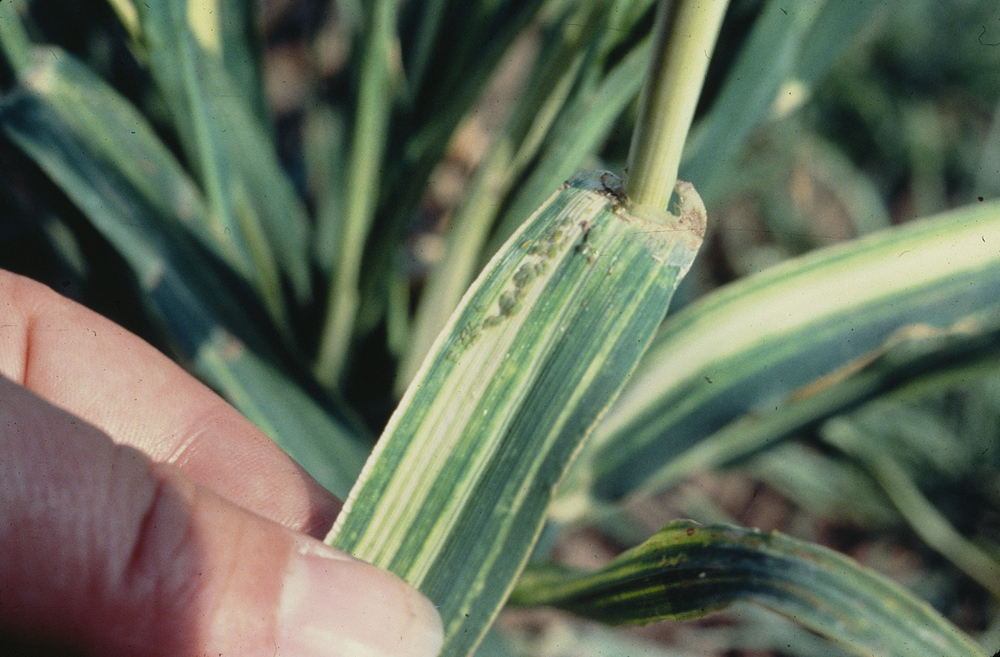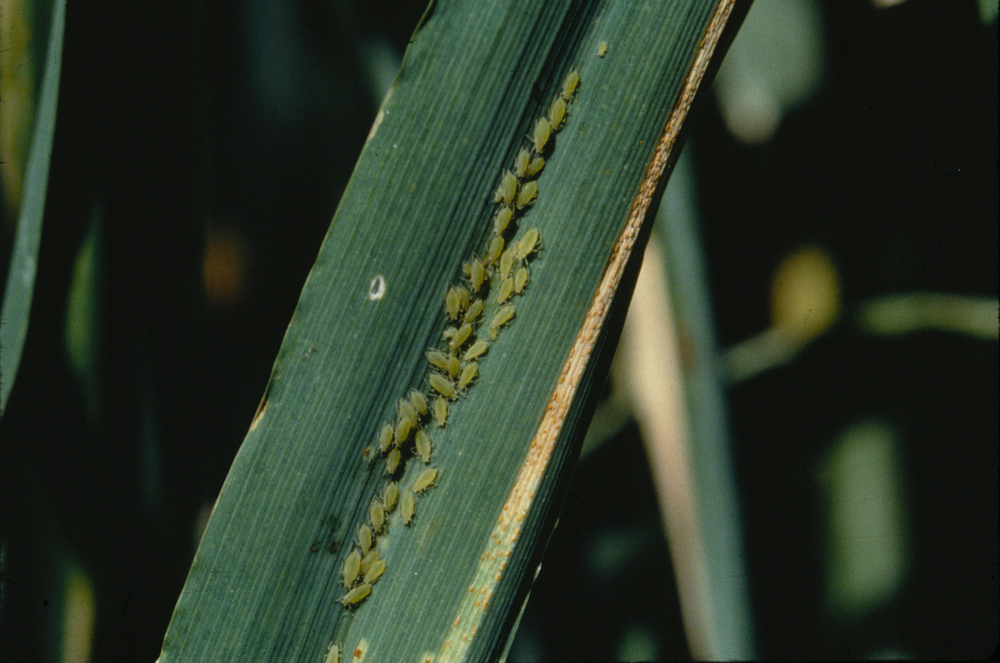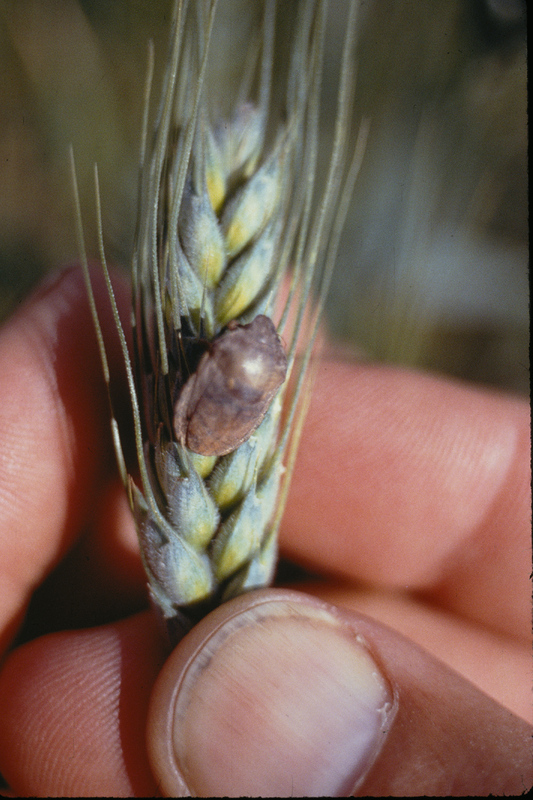Category : Bacterial
Bacterial leaf streak and black chaff
Xanthomonas campestris
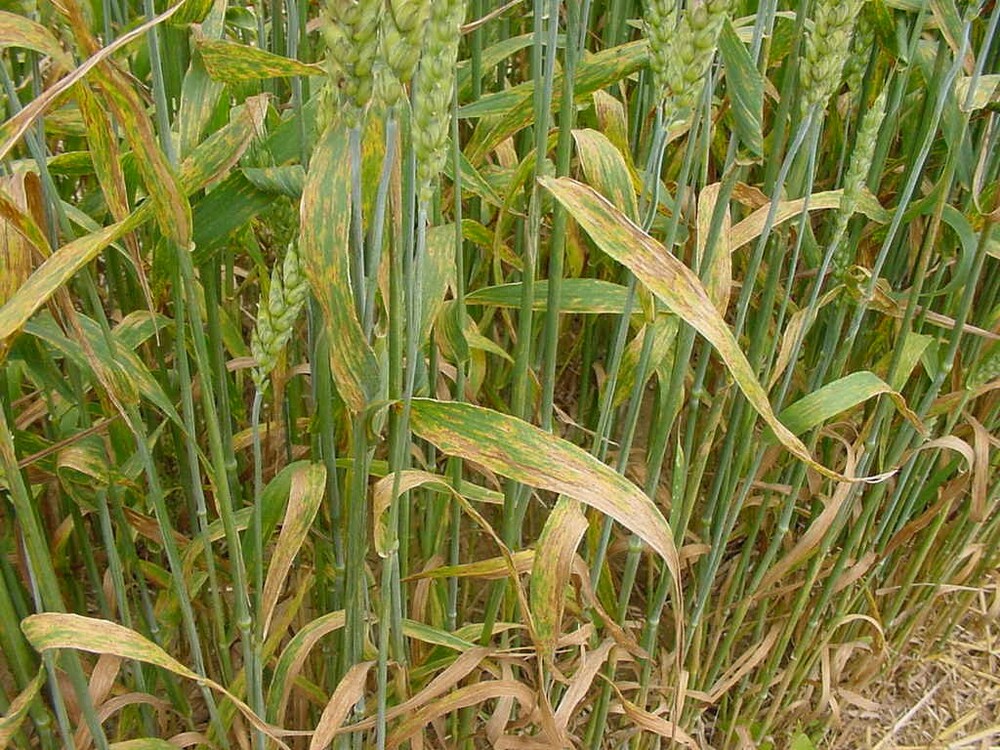
Symptoms of bacterial streak on wheat leaves

Symptoms of bacterial streak on wheat leaves

Foliar symptoms on field plants

Symptoms of black chaff on head
Symptoms
Sudden appearance of water-soaked, light brown, elongated lesions on upper leaves; lesions quickly dry out and turn into necrotic streaks on the leaves; black stripes occur on glumes and purple black lesions appear on rachis and peduncle if infection is in the head
Cause
Bacterium
Comments
Management
Avoid planting seed from infected fields; avoid overhead irrigation; plant less susceptible cultivars
Basal glume rot
Pseudomonas syringae
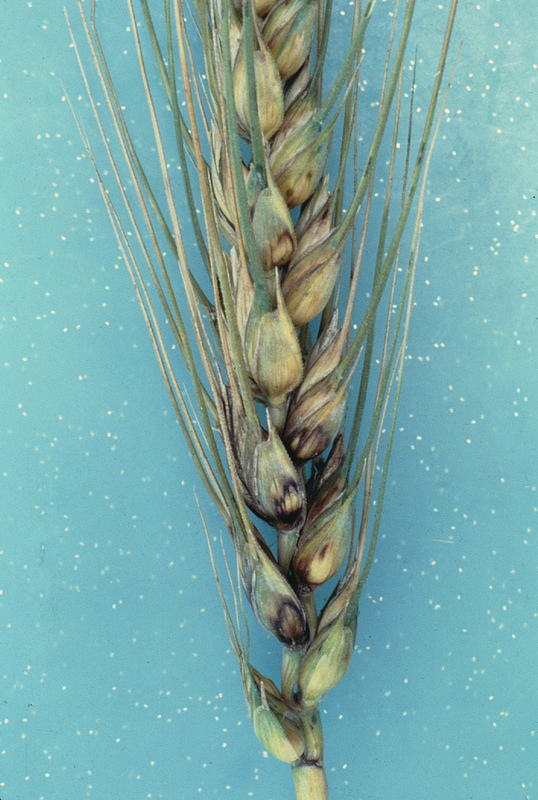
Basal glume rot symptoms on wheat
Symptoms
Dull brown to black discoloration of glumes which is more pronounced on the inner side; seeds may be shriveled; if infection is severe, entire glume may be discolored; small water-soaked lesions may form on leaves
Cause
Bacterium
Comments
Management
Avoid planting seed from plants grown in fields where the disease is known to be present
Category : Viral
Barley yellow dwarf
Barley yellow dwarf virus (BYDV)

Yellow leaves on wheat infected with BYDV

Common wheat infected with BYDV

Purple leaves on wheat infected with BYDV

BYDV infection in winter wheat
Symptoms
Yellowing leaves, particularly the flag leaves; stunted plants due to shortened internodes; leaves may be red, purpple, orange, green or brown; leaves may be distorted
Cause
Virus
Comments
Management
Control of aphid population can provide some control of disease but is dependent on knowing which aphids are active in the field; planting to avoid periods of peak aphid activity can provide a measure of control
Category : Fungal
Common bunt (Stinking smut)
Tilletia tritici
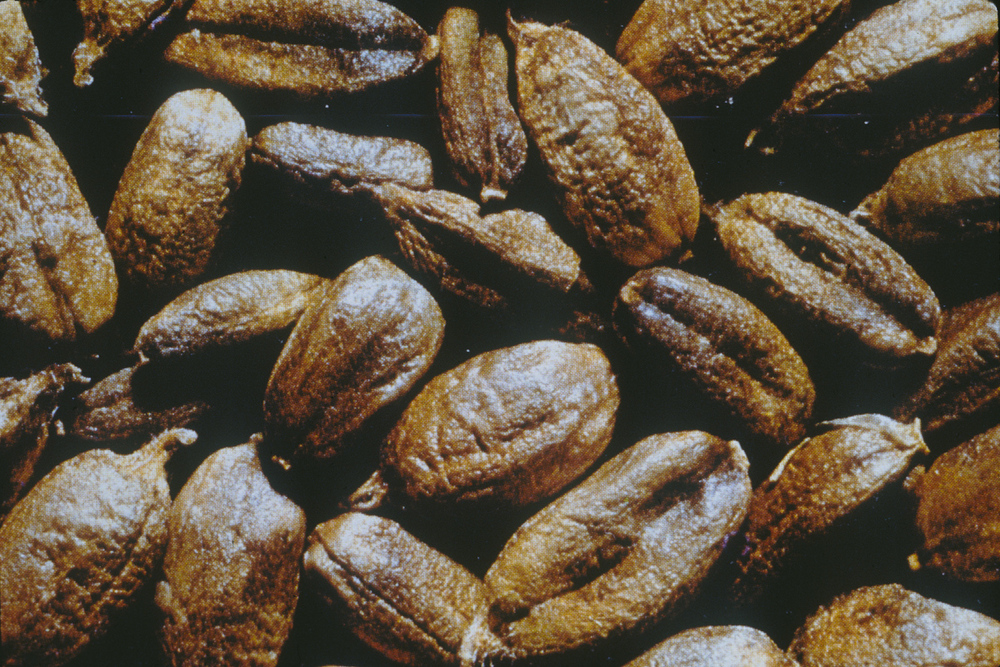
Bunt balls caused by common bunt in wheat
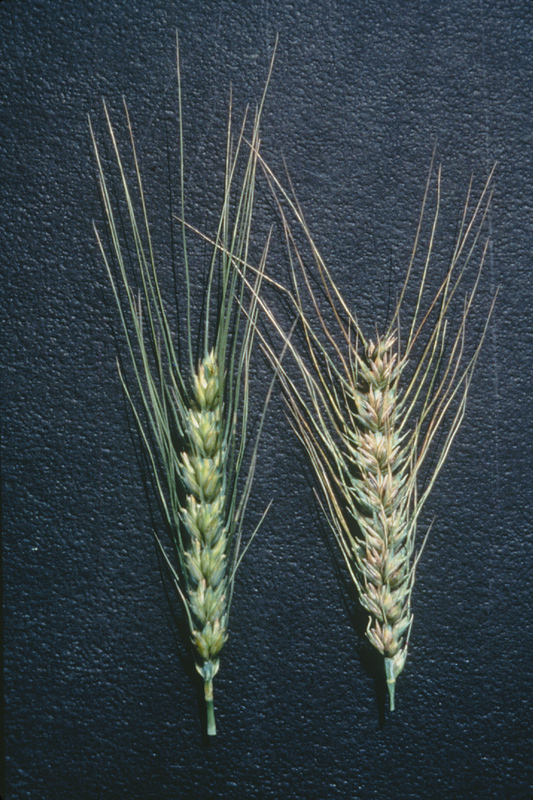
Wheat spike showing symptoms of common bunt, right.

Wheat spike showing symptoms of common bunt, also known as stinking smut.
Symptoms
Slender heads which take longer to turn color than healthy heads; glumes spread apart to reveal spori or "bunt balls" (balls containing fungal spores) which are a similar size to normal kernel but are gray-brown in color; bunt balls break open on harvest and give off a fishy odor
Cause
Fungus
Comments
Management
Disease can be controlled by planting resistant wheat varieties, planting disease-free seed and using a seed treatment prior to planting; disease may also be avoided by planting wheat early in the Fall and by shallow seeding
Ergot disease
Claviceps purpurea

Ergot on wheat spike

Wheat spikes infected with ergot
Symptoms
Main symptoms of ergot is the grains in the head are replaced by dark purple to black sclerotia. This ergot bodies were made up of vegetative strands of fungus. The sclerotic interior is white or tennis white in color. The size of grain kernel and ergot are similar in size.
The initial symptom before sclerotia bodies is honey dew symptom occur during flowering stage. The fungus produce yellowish, sugary excretions and can see as droplets on flower parts.
Cause
Fungal
Comments
Management
Follow crop rotation with non host crops for one year. Deep summer ploughing kills sclerotia bodies present in soil. Keep the field free from grasses and other weeds. Use disease free seeds.
Eyespot
Oculimacula spp.

Wheat stems showing lesions caused by eyespot (Oculimacula yallundae).

Eyespot lesion on wheat stem

Eyespot lesions girdling wheat stems
Symptoms
Elliptical lesions that first appear on leaf sheath and gradually spread to stem; lesions are yellow-brown to tan in color and occur length-ways down the stem; lesions can occur individually or groups of lesions can coalesce to form large areas of discoloration; lesions may eventually girdle the stem; a gray, thread-like fungal growth may occur on the stem beneath the lesion; mature stems may have a charred appearance; infected tillers mature early and develop white heads and poorly filled seed; tillers may fall if stems are severely infected
Cause
Fungus
Comments
Management
Rotation of crop away from cereals for a period of 2-3 years will reduce levels of inoculum in the field; fungicides are commonly applied close to stem elongation to control the disease; plant resistant wheat varieties if available in your area
Fusarium head blight (Scab)
Fusarium spp.
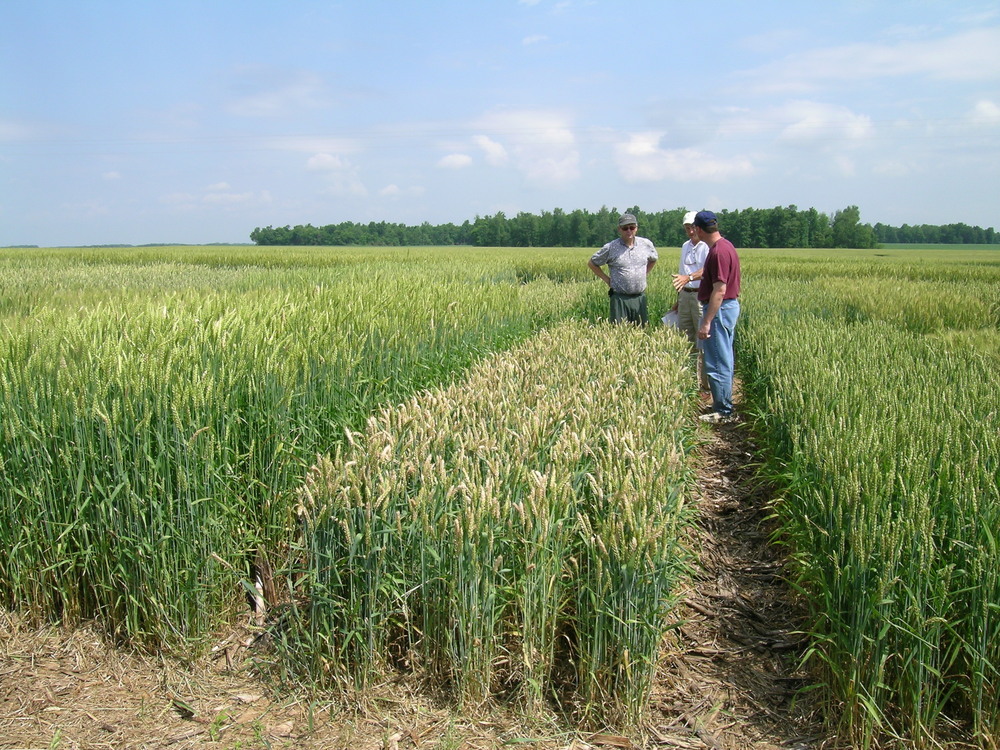
Fusarium head blight symptoms on wheat

Fusarium head blight symptoms on wheat
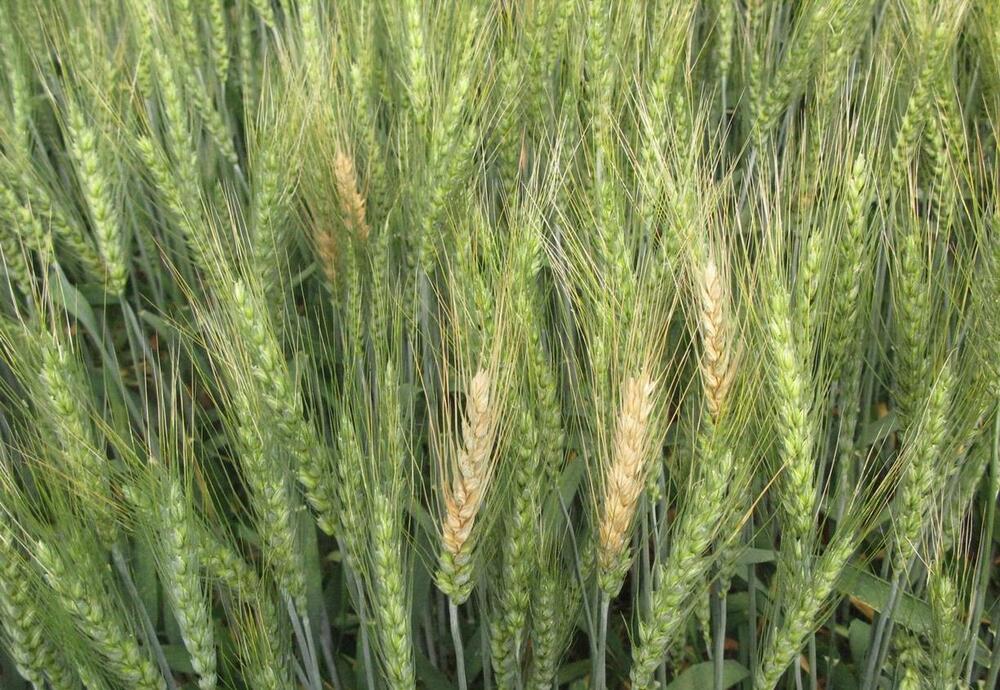
Partially bleached heads in field of wheat
Symptoms
One or more spikelets on newly emerged head bleached; pink or orange fungal masses may be visible at the base of infected spikelet; infected spikelets do not produce seed or produce shriveled and/or discolored seed; severe infections can cause the kernels to have a chalky appearance and are frequently lost during harvest
Cause
Fungus
Comments
Management
Control of the disease can be difficult; durum wheat appears to be more susceptible to the disease than common wheat; crop rotation to a non-host is recommended for at least one year; applications of appropriate fungicides if available can help to control the disease in conjunction with the other measures detailed here
Phythium root rot
Phythium sp.
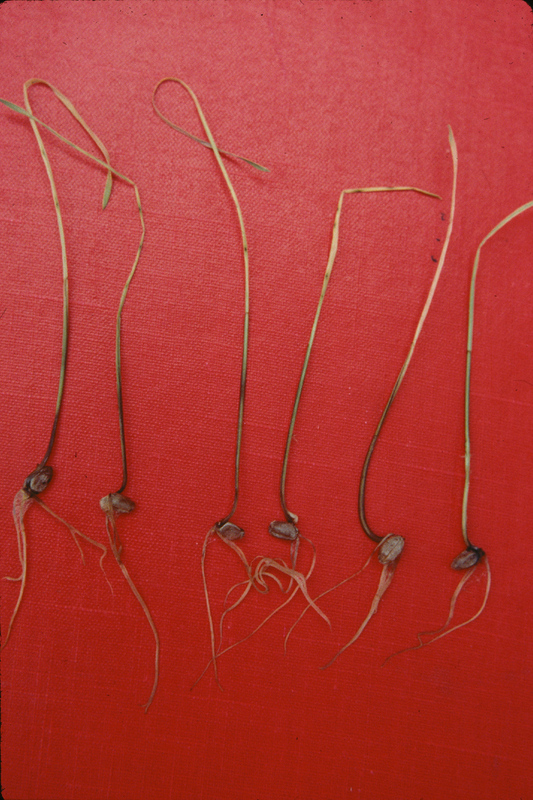
Wheat seedlings showing "damping off", which can be caused pre- or post-emergence by early infection with fungi causing common root rot, foot rot, and crown rot, which may be numerous Helminthosporium, Fusarium, or Pythiurn species.
Symptoms
The infected plants become chlorotic and/ stunted. Often the symptom is confused with nitrogen deficiency. And the plants may produce shriveled grain. Even a mild infection reduce tillers, plant population and maturity. Since symptom appear through out the field make if difficult to diagnose the disease.
Cause
Fungal
Comments
Management
Use good quality seeds. Provide supplemental phosphorous. Sowing when soil temperature is about 50 F increase germination and establishment. Seed treatment with suitable fungicides.
Powdery mildew
Erysiphe graminis

Wheat leaf showing powdery mildew

Powdery mildew symptoms on wheat

Powdery mildew on wheat
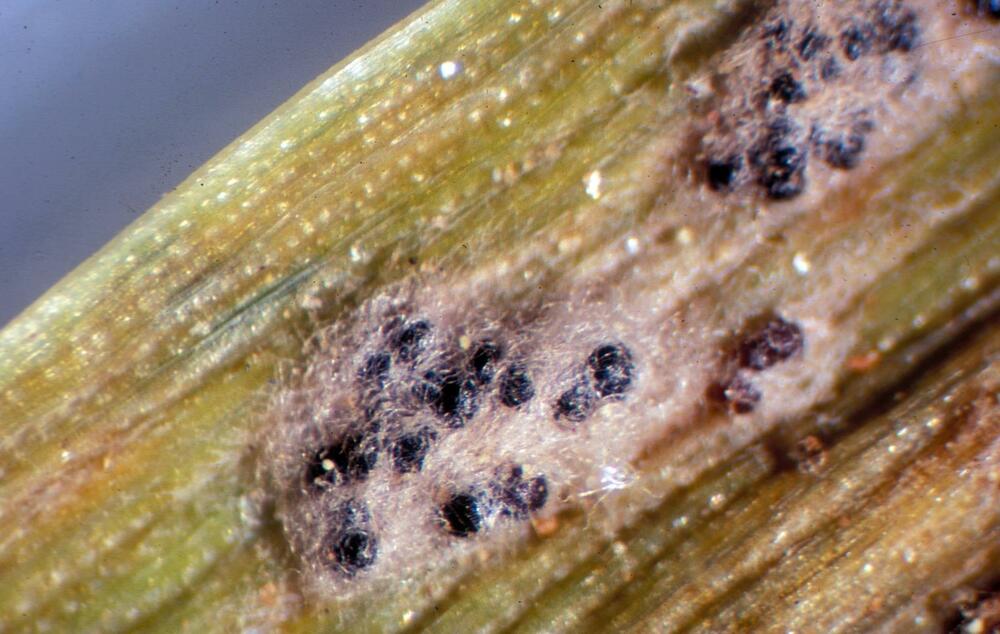
Powdery mildew colonies on wheat leaf

Wheat leaf showing fungal growths due to powdery mildew
Symptoms
Patches of cottony, white-gray growth on upper surface of leaves which turn gray-brown; chlorotic patches develop on leaves opposite fungal growth; fungal fruiting bodies usually become visible as black dots on the mildew
Cause
Fungus
Comments
Management
Planting resistant wheat varieties is one of the best ways to protect plants from powdery mildew; other control strategies include: application of appropriate foliar fungicides, if available; removal of crop debris from field after harvest to reduce the level of overwintering fungus; removal of volunteer wheat plants which can act as a reservoir for the disease
Rusts
Stem rust (Puccinia graminis)
Leaf rust (P. triticina)
Stripe rust (P. striiformis)

Wheat stem rust symptoms
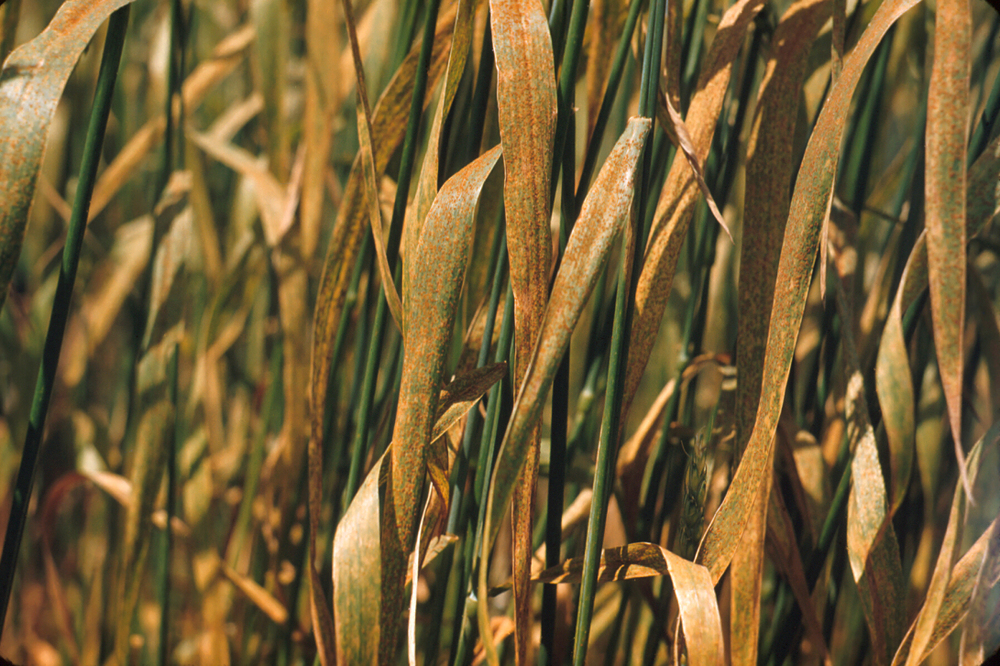
Leaf rust symptoms on wheat

Leaf rust

Stripe rust on wheat spike

Wheat stripe rust
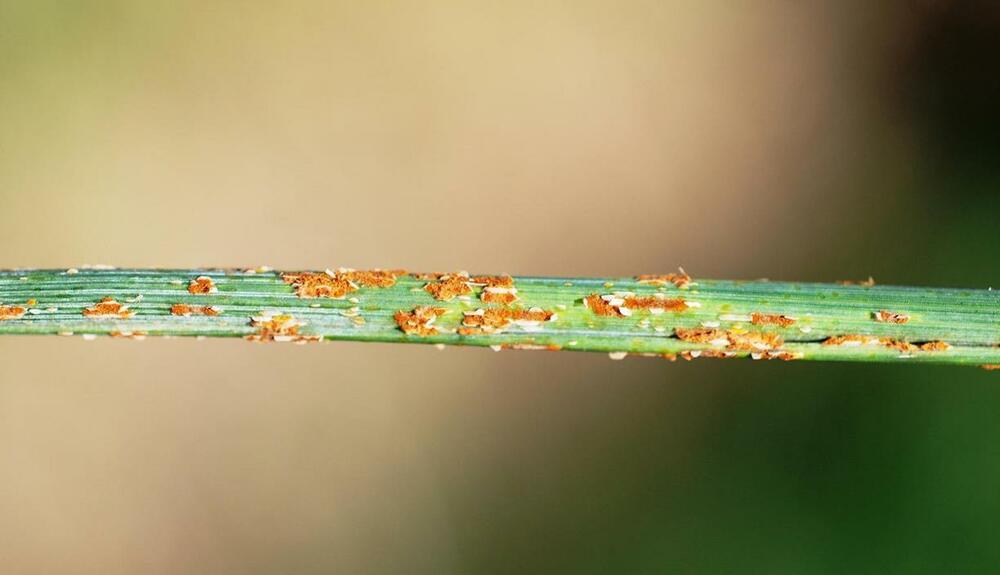
Wheat stem rust
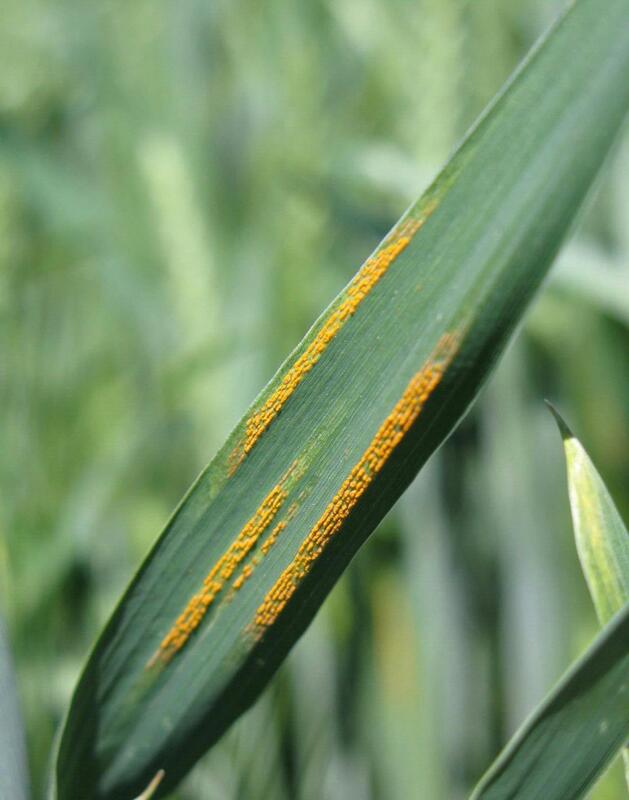
Stripe rust
Symptoms
Chlorotic flecks or brown necrotic spots on leaves or stems; yellow streaks or patches on foliage; brown necrotic streaks on foliage; raised orange pustules may be present on lesions
Cause
Fungus
Comments
Management
The most effective method of controlling rusts is to plant resistant varieties of wheat; other methods of control include: destroying alternate hosts; applications of appropriate protective fungicides; growing wheat varieties that mature early
Tan spot
Pyrenophora tritici-repentis
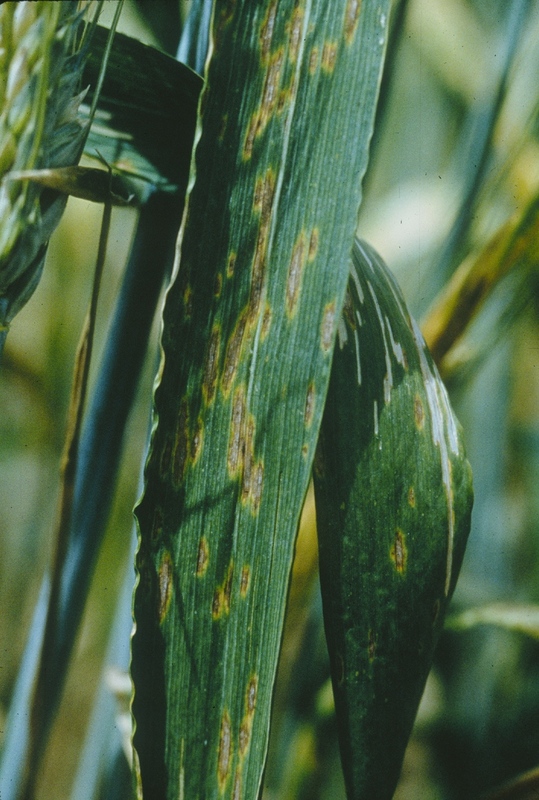
Wheat leaf showing symptoms of tan spot

Tan spot lesion on wheat leaf
Symptoms
Oval or diamond shaped necrotic lesions with brown centers and yellow halos on leaves
Cause
Fungus
Comments
Management
Disease can be significantly reduced by rotating crops with non-hosts and tilling crop debris into soil after harvest















































